
“Tears and Dust” is a Sci-fi/Western Point & Click Adventure in a 16 bit style. In the game, you control the Protagonist Hunter. A Cyborg who works as Headhunter for a large corporation called vertitas corp. One day he is sent to a far away desert planet, because veritas has some problems with a colony. There he finds himself caught in a conflict between veritas and the rebelling workers, which will test not only his wits but also his morals.
This game was my first real game project which I took on in my second semester. I had a lot of first and a lot of lessons to learn, but in the end my team even managed to win an award and sponsorship with this game.

In „Tears and Dust,“ I took on the role of lead game designer. My responsibilities included the management of two other members, leading debates, and communicating with other departments.
Level-Design
The pipeline below is the result of my work on “Tears and Dust”. Although it was already in use during development, we were not completely aware. Thus, not making full use of it. After finishing our project, I revised our methods and develop it, to use properly use for my future projects.
Variants
Based on the requirments and research we/I start making variants. In the beginning very rough and quickly scratched. Slowly a few of them catch on, these are then documented and discussed with other game designers or the vision keeper. When at least three solid ones remain we start testing them in order to find out which ones are suitable.
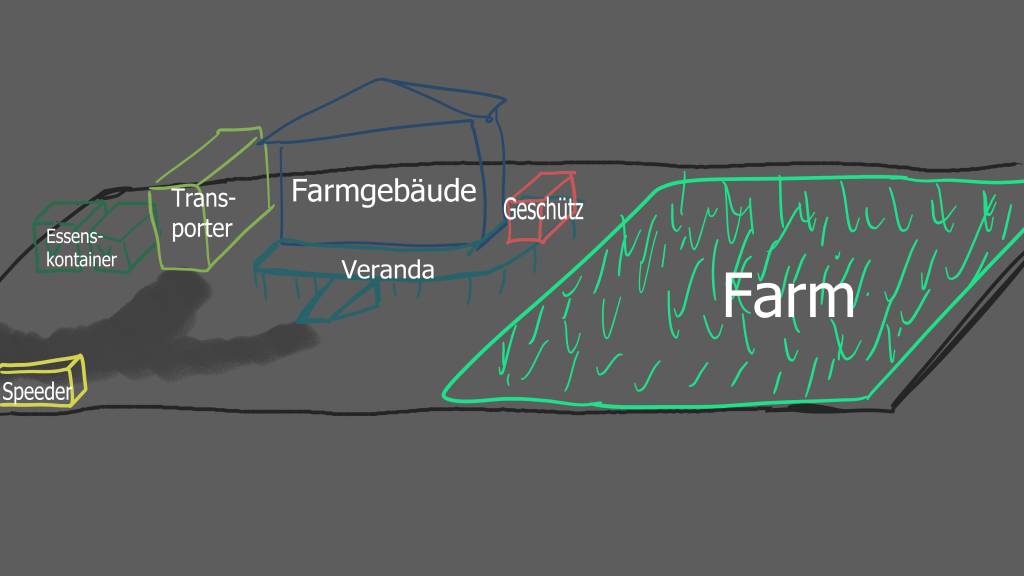
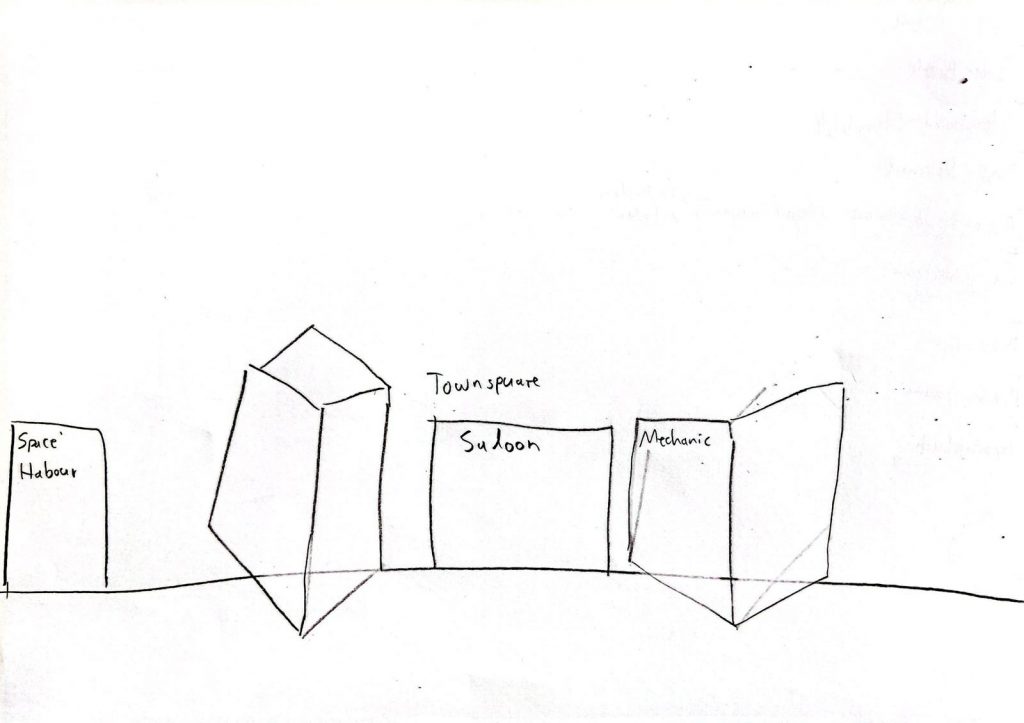


Review
In the end, we decided to use a town as a vertical slice level. That level allows us to introduce many important characters and leaves enough room for our quests. In addition, we don’t throw the player in the middle of the story to avoid confusion.

Layout + Blockout
The final variant is then prepared for other departments to use. For this we created a simple layout, with an asset list that includes all quest relevant items where there are supposed to be found. This method left our artist with enough room to make full use of their abilities without compromising gameplay.
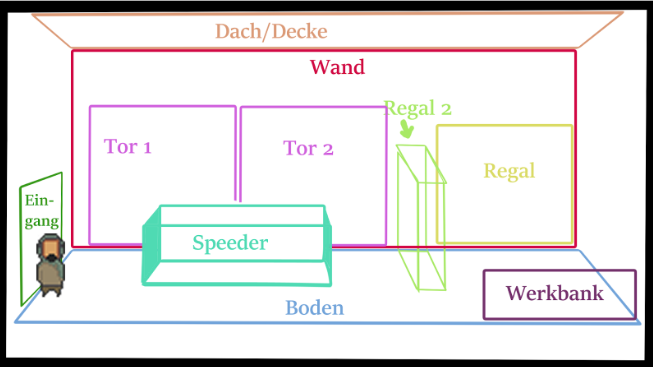
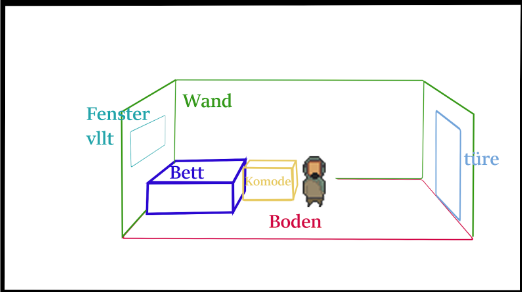

Quest-Design
Creating puzzles/quest for games turned out to be quite a though puzzle itself. For it guides the player through a game and determines how they experience the game. So before making them, I answered the questions in the pipeline below. Then I use these answers as a framework for the puzzle/quest I make. A workflow I found/created while working on “Tears and Dust”.

Brainstorm and Requirements
This quest and its puzzles are meant for the vertical slice, meaning we have to fully introduce the gameplay experience. That includes the core game mechanics and a first impression of the story. So we had a lot of ground to cover with a single level.
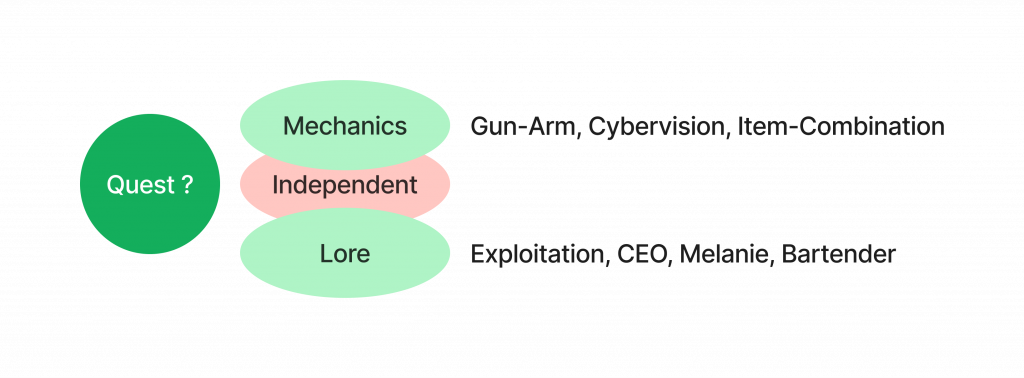
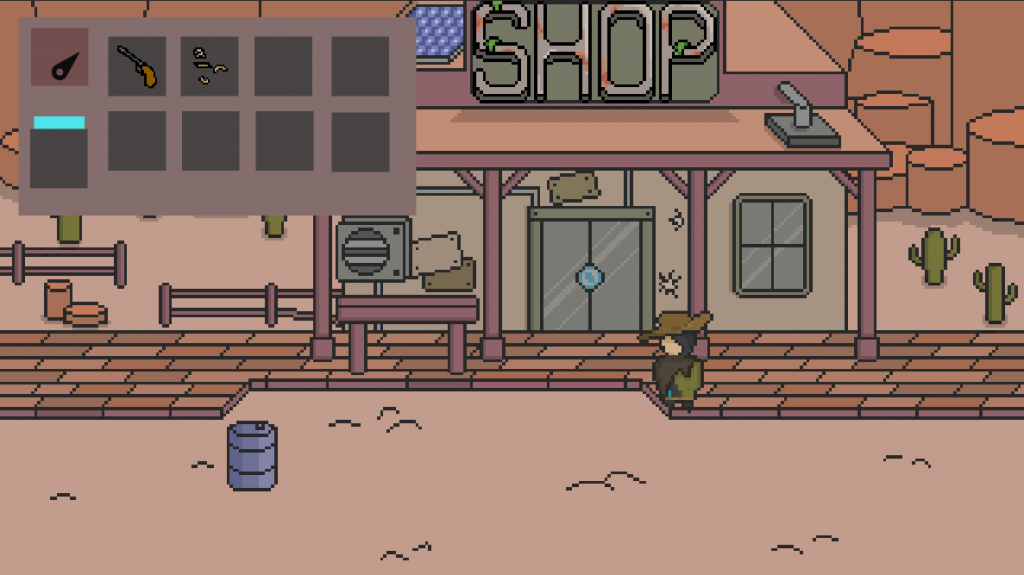

Elimination with Prototypes
After a lot of brainstorming, testing and throwing away. We were left with four possible quests. In order to properly judge them, we implemented in engine. Then we decided upon a few criteria to help us to make a more unbiased decision and have common ground when reviewing the results.
As you can see in the table, the sand speeder had the highest score. That made it our choice for the vertical slice.
GDD
After working out all the what, when, who and where’s I put together an overview for the other members. In this case, a diagram portraying the order of the steps required for the quest.

Mechanchic
The mechanics of the game were an entirely different challenge compared to level and quest, because the requirements are a lot more abstract. They’re also the part of the game development that I enjoy most. For me a good game mechanic is determined by their interactions, may these be with the setting, story, platform or other mechanics. In “Tears and Dust” we managed to do this quite well. The weapon-arm for example leaning in on the Sci-fi and Western genre, as well as giving the player a toy and a new way of interacting with the world.

Brainstorm
Our research concluded that the core of Point & Click Adventure is „Click around and find out„. So we decided that our game mechanics should make clicking around more versatile and fun.
One common problem with point and click games is item visibility. To avoid unwanted frustration, we decided that we had to implement highlighting one way or another.
Based on these two factor, we began working on our game mechanics.
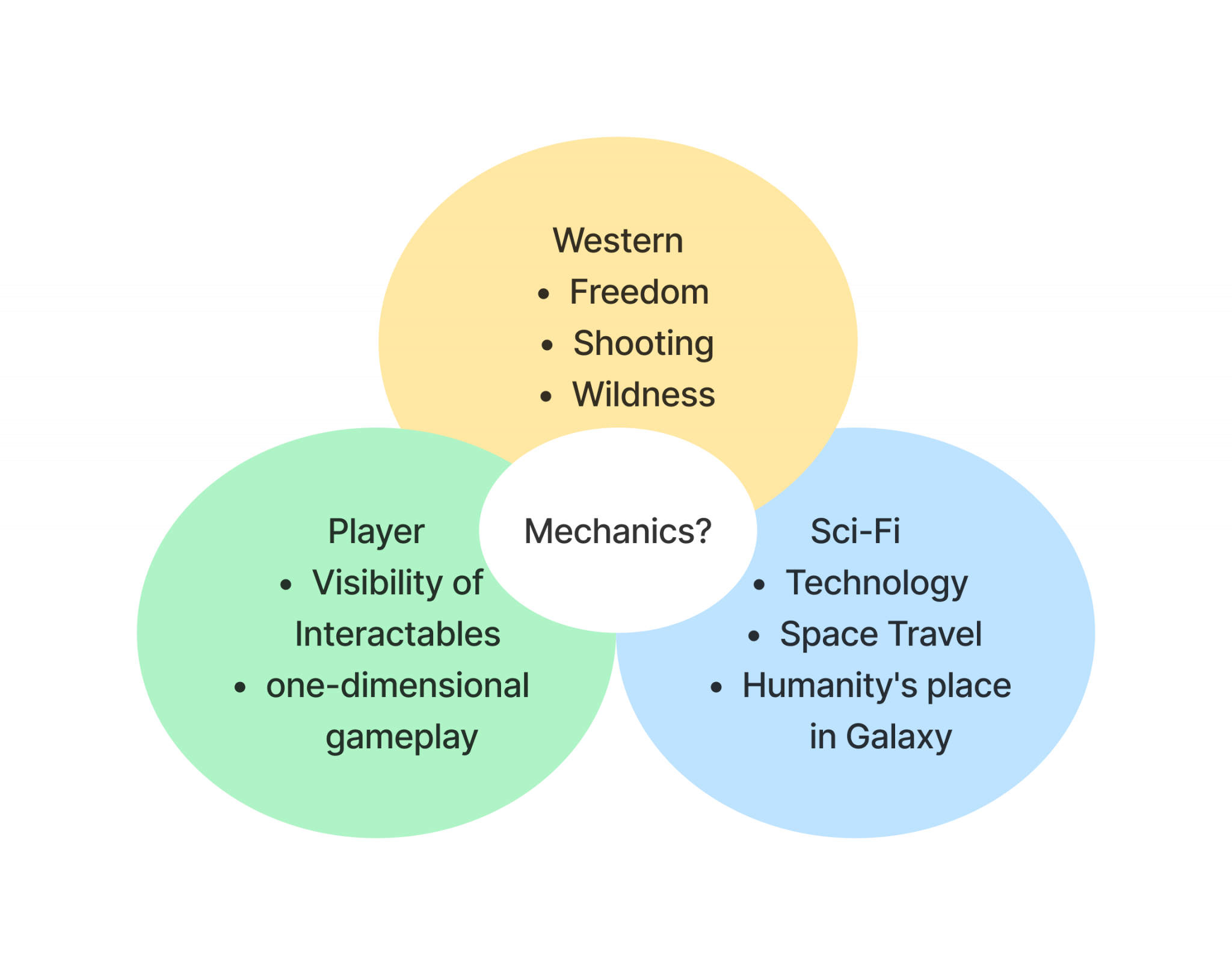
Prototyp
After some playing around, we decided upon three main mechanics. First would be the weapon-arm, which allows the player to shoot. This way he has a toy at hand and can interact with the world. Also going hand in hand with our Sci-fi/Western setting. Second is the interaction wheel, with which we enable a more diverse interaction with the world at a base level. The player has room to try out different thing and possibilities for puzzles increases drastically, allowing us to prevent repetition. And last but not least, the Cybervision, which our protagonist uses with his cyborg eye. This vision highlights items and makes hidden traces visible, providing another layer of interaction.
GDD
After finalising how the mechanics work and interact with eachother. I wrote them down for other designers and developers to look up.

What I learned from Tears and Dust
As my first project, tears and dust put me before quite a few challenges. I had to learn how to properly justify and explain design decisions. In addition, I had to communicate these decisions to other team members who were specialist in different fields, while keeping them accessible at all times. These seem like the very basic of team development, that’s because they are. Through this game I learned that working in a team means trust, co-dependent and compromises. Tears and Dust marks the start of my journey to become a professional game-designer.
